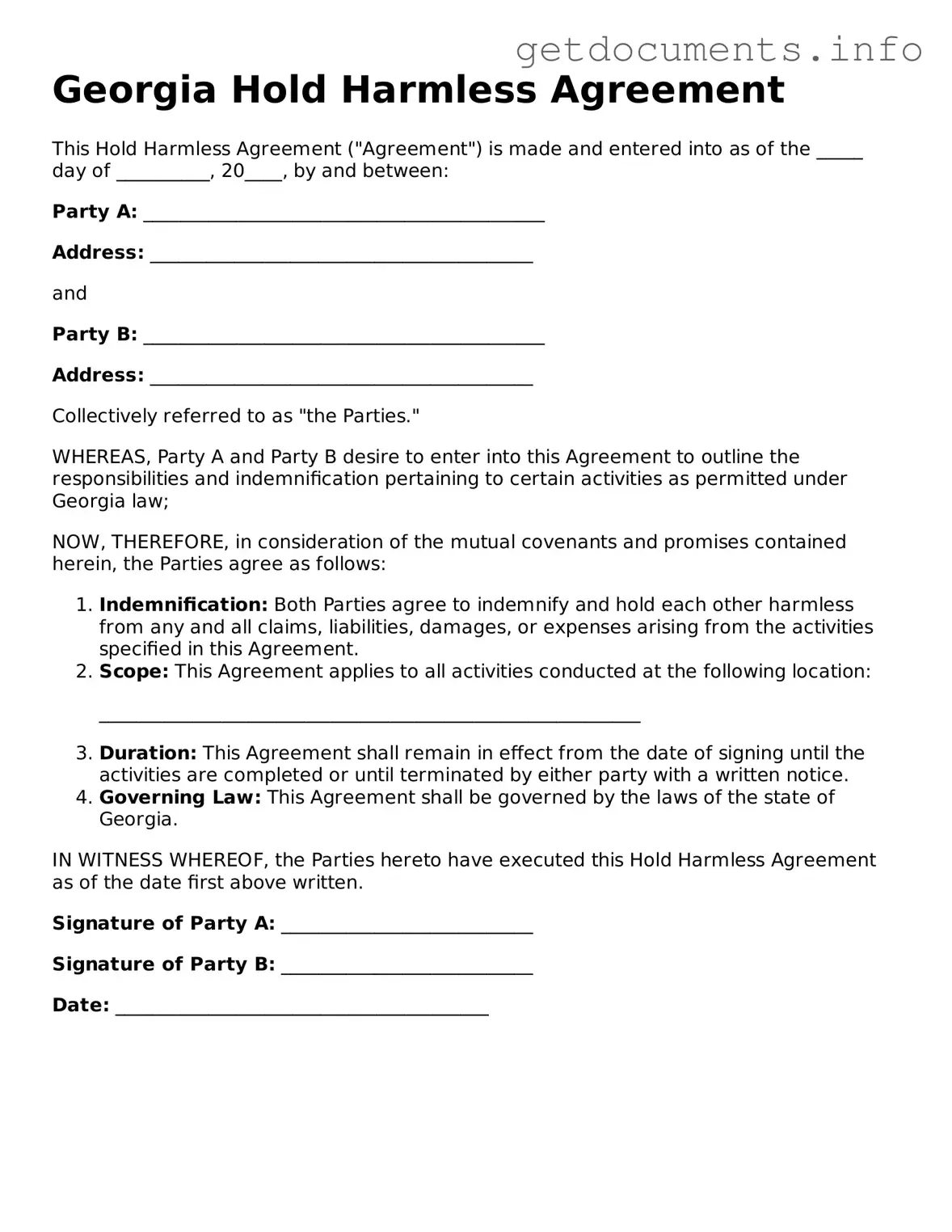In the world of legal agreements, the Georgia Hold Harmless Agreement stands out as a vital tool for individuals and organizations seeking to protect themselves from potential liabilities. This form serves as a mutual understanding between parties, where one party agrees not to hold the other responsible for any injuries, damages, or losses that may occur during a specified activity or event. Often used in various contexts, such as rental agreements, construction projects, and community events, the Hold Harmless Agreement is designed to clarify responsibilities and minimize disputes. By clearly outlining the terms and conditions, this agreement can provide peace of mind for all involved. It emphasizes the importance of accountability and risk management, ensuring that participants understand the inherent risks associated with their activities. Whether you are a property owner, event organizer, or contractor, understanding the nuances of this agreement can be crucial in safeguarding your interests and fostering a collaborative environment.
